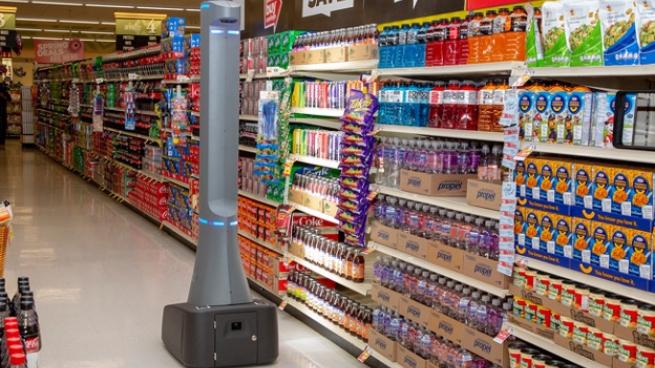5 Myths to Bust about Post-Pandemic Tech Strategy
Retailers are urgently closing gaps and heavily investing in the supply chain, e-commerce and in-store tech, aren’t they? Not exactly, according to the 2021 RIS Retail Technology Study.
Instead, analysis of the 80-plus technologies benchmarked in the 31st Annual Retail Technology Study reveals surprising decisions made by retailers that seem counter intuitive as they prepare for a post-pandemic future.
One would think that retailers will apply lessons learned during the global health crisis to their investment strategies. And they are. However, retail tech investment is much more complex and nuanced than simple stimulus-response reaction, even to extreme disruption.
Here are five post-pandemic tech investment myths and the data that disproves them.
Myth #1: Supply Chain Investment Will Sharply Increase to Speed Up Omnichannel Fulfillment and Reduce Future Product Outages.
Actually, most supply chain technologies tracked in the 2021 study show only steady investment or a small uptick when compared to datapoints from the pre-Covid 2019 RIS Retail Technology Study.
Here’s a rundown of supply chain investment plans within the next 24 months from the time of the study. In the 2019 study, this means investment was scheduled to take place in 2019-2020. In the 2021 study, this means investment will take place in 2021-2022.
2019 v. 2021
23% v. 14% – Transportation Management (Down 9 percentage points.)
22% v. 14% – Logistics (Down)
27% v. 24% – Radio Frequency Identification (RFID) (Down)
25% v. 25% – Order Management (No change.)
34% v. 35% – Real-Time Inventory Visibility (Up slightly.)
23% v. 24% – Warehouse Management (Up slightly.)
11% v. 14% – Fulfillment (Up)
19% v. 22% – Returns Management (Up)
Two technologies that recorded big leaps are Drop-Ship Management, up 5 percentage points year over year, and Sourcing, up 6 percentage points.
2019 v. 2021
19% v. 24% – Drop-ship management (Up)
22% v. 28% – Sourcing (Way up.)
Both of these tech systems are clearly linked to the product disruptions that occurred during the pandemic, which disappointed so many shoppers. Retailers that upgrade these systems will be well positioned to exert better control over product availability to satisfy customers and meet business (sales and profits) goals.
Myth #2: E-Commerce Investment Will Sharply Increase to Take Advantage of the Surge in Online Purchasing.
Nope. Retailers are making steady investments in all areas except for one – personalization, which is a sharp focus.
Here’s a rundown of digital commerce investment plans within the next 24 months compared to datapoints from two years ago.
2019 v. 2021
31% v. 10% – E-Commerce Platform (Down 21 percentage points.)
25% v. 11% – Customer Reviews/Ratings (Way down.)
26% v. 18% – Chatbots (Down)
32% v. 24% – Dynamic Pricing (Down)
24% v. 21% – Distributed Content Management/Repository (Down)
33% v. 31% – Product Recommendations (Down)
16% v. 18% – Remarketing (Up slightly.)
Despite study respondents reporting that 32% of overall sales came from digital channels in 2020 (compared to 23% the year before) they are not making heavy investments across the board for upgrading e-commerce solutions.
Instead, smart retailers are concentrating on one highly targeted area – personalization. These investments are going into CRM (managing and using data about shoppers) and targeted messaging through e-mail, mobile apps and text messaging.
2019 v. 2021
28% v. 31% – CRM/Personalization (Up)
22% v. 27% – E-Mail, Mobile, Text Marketing/Messaging (Up 5 percentage points.)
Myth #3: In-Store Tech Investment Will Rise to Meet the Shopper Surge as Stores Fully Open Up for Business.
Yes and no. While most in-store tech categories show a reduction in 2021 compared to 2019, the impact of recent heavy investment has brought many retailers up to date in key areas and so further investment is not needed.
For example, 44% (a huge number) of retailers planned to invest in Shopper Tracking in 2019 so it is not surprising that just 28% (still a large number) need to invest in this capability in 2021. If a retailer is up-to-date it does not need to make additional investment.
2019 v. 2021
31% v. 6% – In-Store Pickup/Return of Web Goods (Down 25 percentage points.)
44% v. 28% – Shopper Tracking Capability (Way down.)
33% v. 16% – Real-Time Store Monitoring/KPIs (Way down.)
33% v. 23% – Clienteling/Guided Selling (Way down.)
27% v. 17% – Computer Vision (Way down.)
18% v. 10% – In-Store Video Analytics (Way down.)
11% v. 6% – WiFi for Customers (Down)
37% v. 34% – Location-Based Sensing for Marketing/Communications (Down)
23% v. 20% – Mobile Devices for Associates/Managers (Down)
22% v. 20% – In-Store Shipping (Down)
19% v. 17% – Electronic Shelf Labels (Down slightly.)
There are two big gainers for in-store tech: Digital Devices, such as Signage, Kiosks and Magic Mirrors, and Item-Level RFID.
2019 v. 2021
27% v. 34% – Digital Devices, i.e. Signage, Kiosks, Magic Mirrors, etc. (Up 7 percentage points.)
18% v. 26% – Item-Level RFID (Up 8 percentage points.)
Both of these technologies are important for different reasons. Digital Devices are key elements that will help reinvent the store experience and make it more digital, more omnichannel, and more responsive. This will become critical as stores open up more fully throughout the year.
Item-Level RFID, on the other hand, will help retailers ensure shelves are stocked with products and deliver real-time, highly accurate information that will help enforce timely restocking and predictive re-ordering.
Myth #4: Since Advanced Analytics Are Critical, the Category Will Experience Steady Growth as Retailers Fine Tune Data-Based Decision Making.
This assumption grossly underestimates the Impressive strength of retailer investment plans in the overall analytics category, where all applications or capabilities, except for two, are up year-over-year.
2019 v. 2021
36% v. 24% – In-Store Shopper Tracking Analysis (Down 12 percentage points.)
34% v. 27% – Location Analytics (Down)
29% v. 30% – Multi-Channel Customer Behavioral Segmentation (Up slightly.)
28% v. 30% – Market Basket Analysis (Up slightly.)
34% v. 37% – Campaign Analysis (Up)
35% v. 38% – Price Optimization (Up)
24% v. 27% – Pricing Intelligence (Up)
24% v. 30% – Multi-Channel Frequent Shopper/Loyalty Tracking (Up)
31% v. 37% – Inventory Optimization (Up)
25% v. 34% – Markdown Optimization (Way up.)
38% v. 47% – Prescriptive Analytics (Way up.)
32% v. 42% – Space Optimization (Way up.)
The superstar technology in the analytics category is, as one might guess, Artificial Intelligence, where a majority (52%) of retailers say they plan to make investments in the next two years. A comparison to 2019 shows that AI investment climbs an amazing 23 percentage points in two years.
2019 v. 2021
29% v. 52% – Artificial Intelligence (Way up.)
Myth #5: Workforce Management Is a Mature Technology That Will Not Get the Same Level of investment as More Cutting-Edge Categories.
Couldn’t be more wrong. Plans for workforce management tools over the next two years are the top investment category in the study with numbers across all applications but one increasing by double digits.
2019 v. 2021
24% v. 31% – Real-Time Store/Employee Monitoring (Up)
21% v. 35% – Human Resources (Way up.)
26% v. 41% – Labor Scheduling (Way up.)
23% v. 38% – Task Management (Way up.)
29% v. 45% – Employee Engagement Management (Way up.)
36% v. 52% – Education and Training (Way up.)
21% v. 45% – Recruitment and Onboarding (Way up.)
26% v. 52% – Mobile Workforce and/or HR Apps (Way up.)
14% v. 41% – Time and Attendance (Way up.)
“Employees” in the retail industry refers to store associates, aka frontline workers. In a historic shift, store associates became recognized as “essential workers” during the pandemic. This recognition belatedly comes to a segment in retail that has been traditionally under recognized, underserved, and under paid.
No doubt the proliferation of higher minimum wage laws and union organizing at Amazon warehouses are contributing factors to the current strong focus on investing in workforce management tools, however it is also clear the “essential” designation during the national health crisis was a spark that ignited a paradigm shift.
For a complete set of charts and analysis from the 2021 RIS Retail Technology Study click here.







